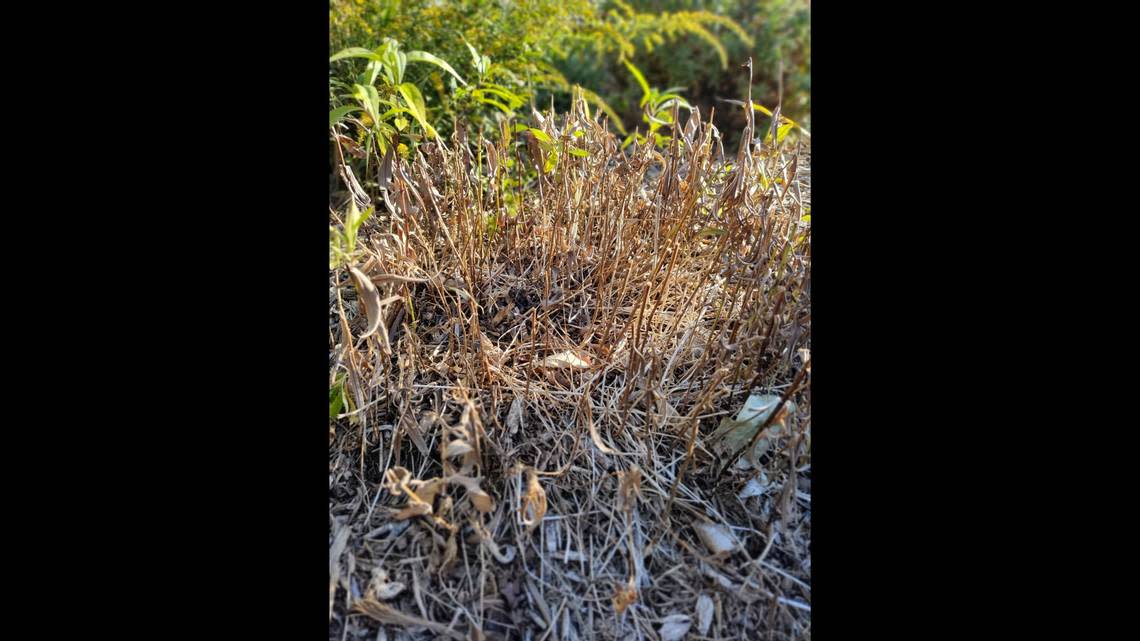Good news for those dreading fall yard cleanup: Less can be more this time of year
Out of an estimated 3 million species of insects in the world, fewer than 3% are harmful to people and plants. An overwhelming 97% are either not a problem or should be regarded as beneficial. They are valued as decomposers or pollinators and are a necessary part of the food chain. Reports show a decline in the number of important native insects.
Every one of us should care about protecting these insects. They are necessary for pollinating about a third of all the food we eat. Gardeners usually focus on the 3%, worried about something attacking and damaging their plants. Times have changed and more people are beginning to understand the value of insects and the role they play in our environment.
Doing our part to reverse this trend begins in our own backyards. We must rethink how we clean up the garden in the fall. Many of our native insects, bees, butterflies and spiders depend on and utilize plant debris to provide protection for their winter survival.
Former recommendations were to clean up the garden in the fall and remove the plant debris to reduce insect and disease problems in the coming season. This advice was based on reducing the small number of potentially damaging insects. It did not take into consideration the vast number of valuable, beneficial insects.
The updated recommendation is to leave most of the old stalks, stems, spent flowers and wind-blown leaves in place over winter. What once was considered waste material is home to many beneficial insects essential to help the garden flourish when spring arrives. While they are out of sight to the naked eye, that does not mean they are absent.

Insects overwinter as eggs, larvae or caterpillars, and as adult stages. They lie dormant, waiting for warmer spring conditions to arrive. The hibernating stages cling to stalks, burrow into hollow stems, tuck into spent flowers or snuggle down into the leaf litter, protected from the harsh winter conditions. Removing this material in the fall destroys them and reduces the population for the coming year.
Limit fall garden clean up to only heavily diseased plants. Retain withered stems and wind-blown leaves in the garden. As the days shorten and the temperatures cool, beneficial insects naturally prepare for overwintering and use the garden refuse.
Research indicates spring garden cleanup should be postponed until after air or soil temperatures reach a consistent 50 degrees for about a week. At that time, most beneficials have emerged from the overwintering stage. Another indicator of when to remove debris would be after the insects have emerged and we see them actively out and about.
Rethink spring cleanup. Instead of chopping, shredding, composting or bagging yard waste, the best recommendation is to loosely pile the debris. Or leave short, withered stems for additional nesting cavities. This allows late-emerging insects to survive and repurposes those plant materials for incubating the next generation.
Waiting to clean up the garden could appear messy, but this is the beauty of nature and helps to preserve these tiny creatures that do so much for our ecosystems and the food web. Tucking the plant debris in an inconspicuous spot or letting old stems mix in with new growth will help offer sanctuary and support to our dwindling insect population.
Dennis Patton is a horticulture agent with Kansas State University Research and Extension. Have a question for him or other university extension experts? Email them to garden.help@jocogov.org.
